Tower of London Complied with : : Philatova
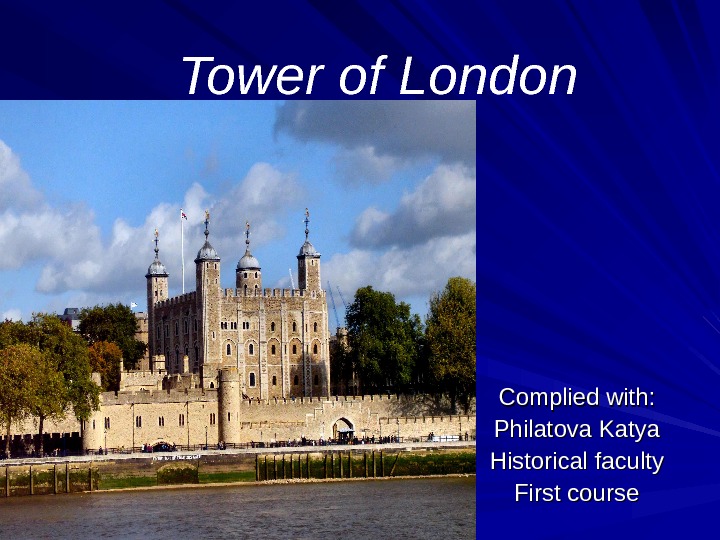
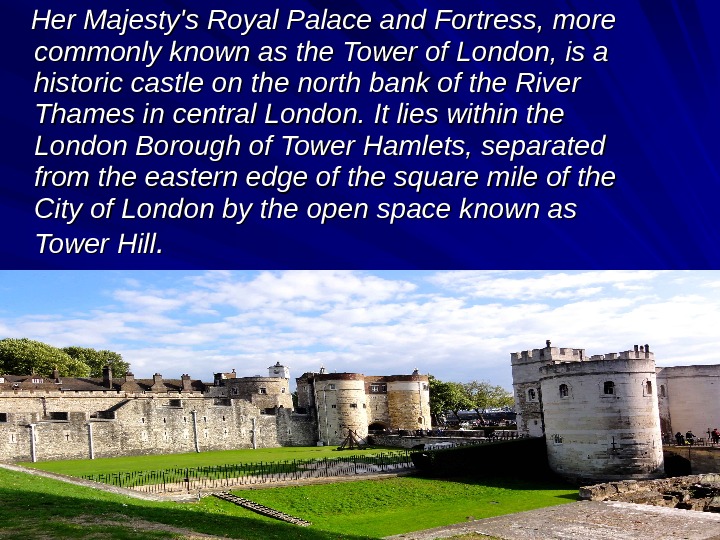
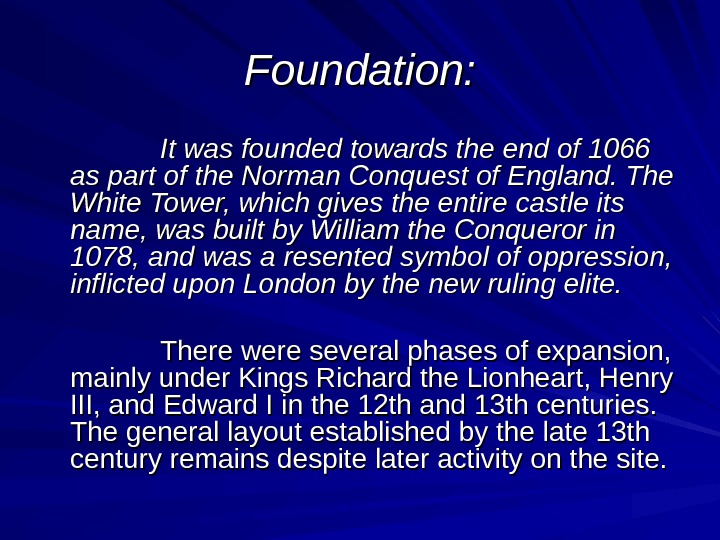
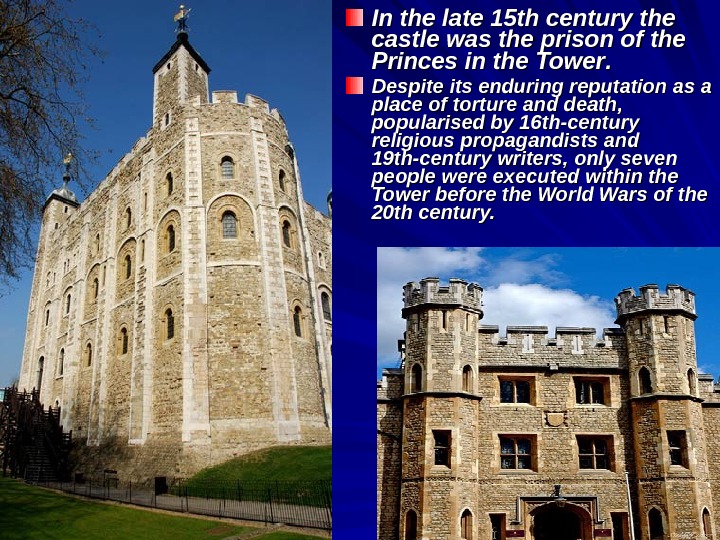
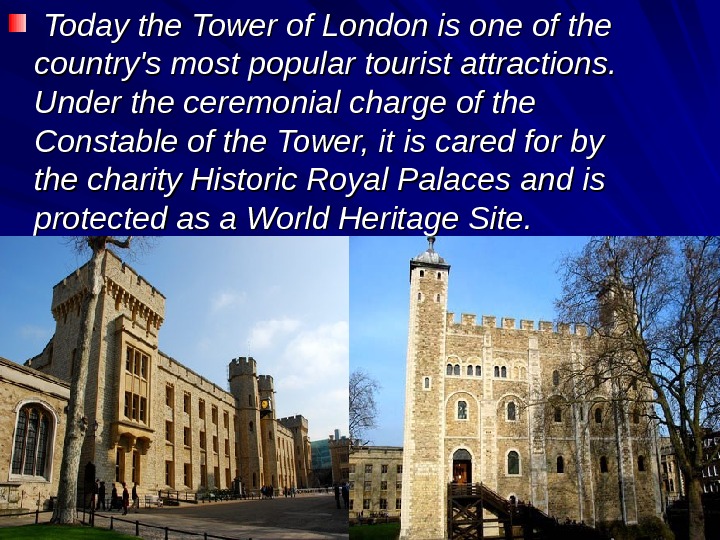
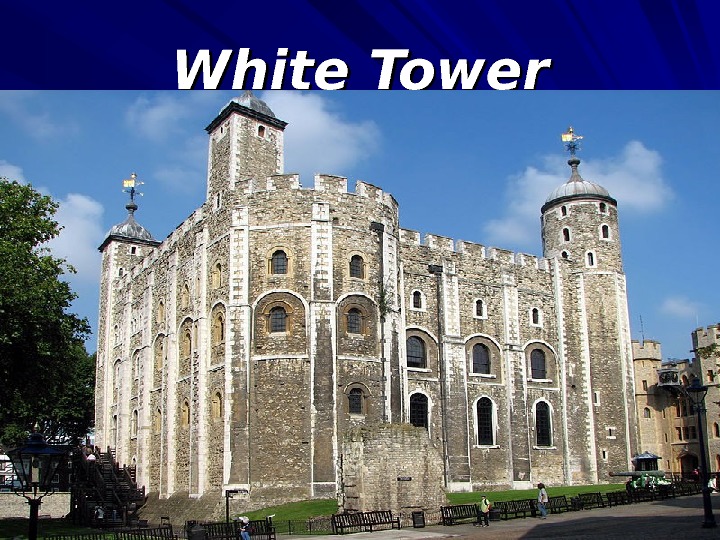
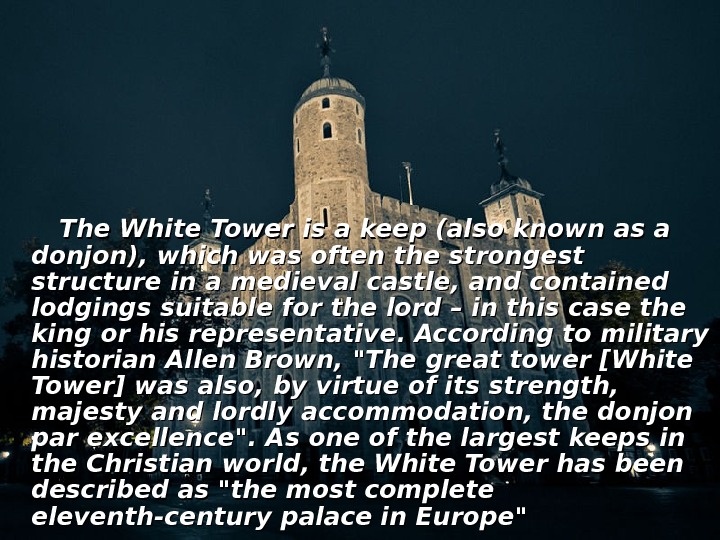

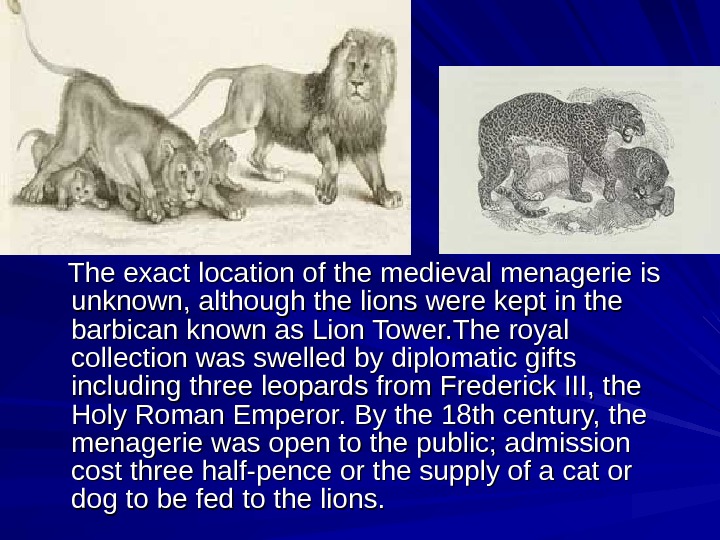
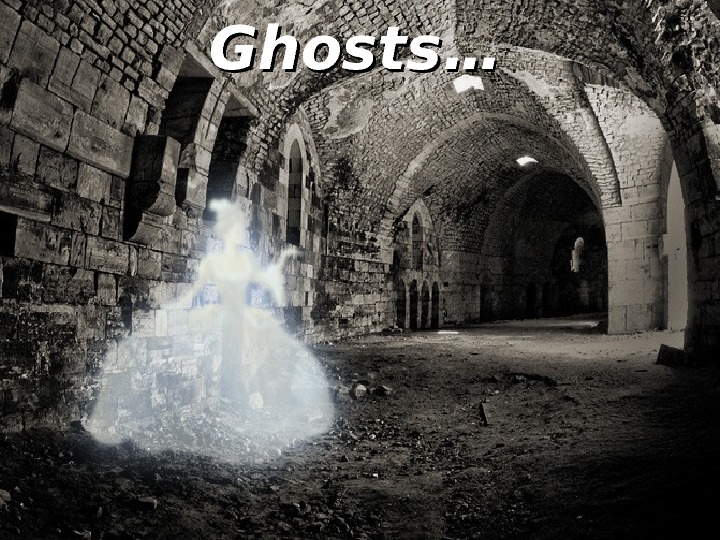
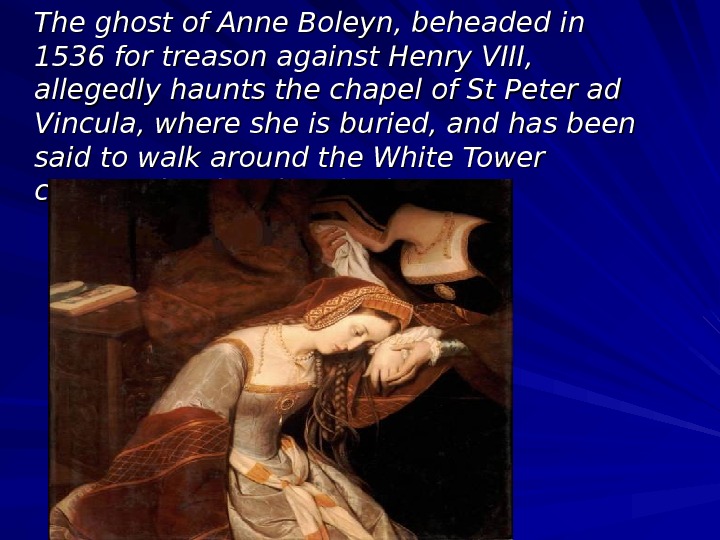
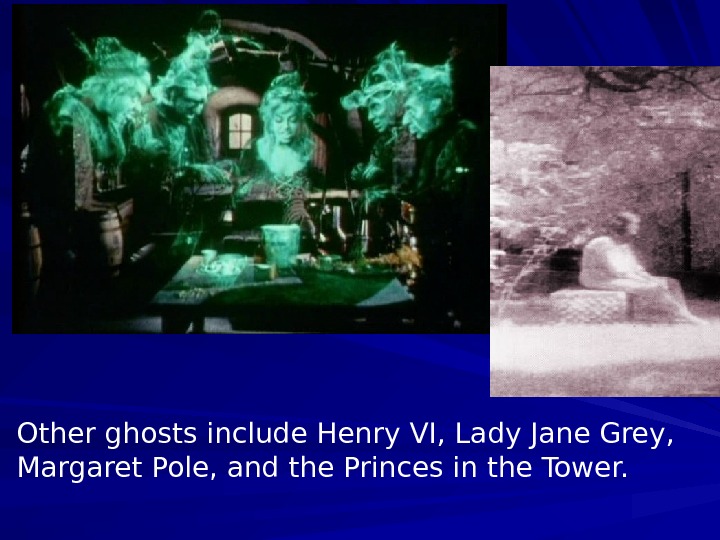
- Размер: 1.9 Mегабайта
- Количество слайдов: 12
Описание презентации Tower of London Complied with : : Philatova по слайдам
 Tower of London Complied with : : Philatova Katya Historical faculty First course
Tower of London Complied with : : Philatova Katya Historical faculty First course
 Her Majesty’s Royal Palace and Fortress, more commonly known as the Tower of London, is a historic castle on the north bank of the River Thames in central London. It lies within the London Borough of Tower Hamlets, separated from the eastern edge of the square mile of the City of London by the open space known as Tower Hill. .
Her Majesty’s Royal Palace and Fortress, more commonly known as the Tower of London, is a historic castle on the north bank of the River Thames in central London. It lies within the London Borough of Tower Hamlets, separated from the eastern edge of the square mile of the City of London by the open space known as Tower Hill. .
 Foundation: It was founded towards the end of 1066 as part of the Norman Conquest of England. The White Tower, which gives the entire castle its name, was built by William the Conqueror in 1078, and was a resented symbol of oppression, inflicted upon London by the new ruling elite. There were several phases of expansion, mainly under Kings Richard the Lionheart, Henry III, and Edward I in the 12 th and 13 th centuries. The general layout established by the late 13 th century remains despite later activity on the site.
Foundation: It was founded towards the end of 1066 as part of the Norman Conquest of England. The White Tower, which gives the entire castle its name, was built by William the Conqueror in 1078, and was a resented symbol of oppression, inflicted upon London by the new ruling elite. There were several phases of expansion, mainly under Kings Richard the Lionheart, Henry III, and Edward I in the 12 th and 13 th centuries. The general layout established by the late 13 th century remains despite later activity on the site.
 In the late 15 th century the castle was the prison of the Princes in the Tower. . Despite its enduring reputation as a place of torture and death, popularised by 16 th-century religious propagandists and 19 th-century writers, only seven people were executed within the Tower before the World Wars of the 20 th century.
In the late 15 th century the castle was the prison of the Princes in the Tower. . Despite its enduring reputation as a place of torture and death, popularised by 16 th-century religious propagandists and 19 th-century writers, only seven people were executed within the Tower before the World Wars of the 20 th century.
 Today the Tower of London is one of the country’s most popular tourist attractions. Under the ceremonial charge of the Constable of the Tower, it is cared for by the charity Historic Royal Palaces and is protected as a World Heritage Site.
Today the Tower of London is one of the country’s most popular tourist attractions. Under the ceremonial charge of the Constable of the Tower, it is cared for by the charity Historic Royal Palaces and is protected as a World Heritage Site.
 White Tower
White Tower
 The White Tower is a keep (also known as a donjon), which was often the strongest structure in a medieval castle, and contained lodgings suitable for the lord – in this case the king or his representative. According to military historian Allen Brown, «The great tower [White Tower] was also, by virtue of its strength, majesty and lordly accommodation, the donjon par excellence». As one of the largest keeps in the Christian world, the White Tower has been described as «the most complete eleventh-century palace in Europe»
The White Tower is a keep (also known as a donjon), which was often the strongest structure in a medieval castle, and contained lodgings suitable for the lord – in this case the king or his representative. According to military historian Allen Brown, «The great tower [White Tower] was also, by virtue of its strength, majesty and lordly accommodation, the donjon par excellence». As one of the largest keeps in the Christian world, the White Tower has been described as «the most complete eleventh-century palace in Europe»
 Menagerie The Royal Menagerie is first referenced during the reign of Henry III
Menagerie The Royal Menagerie is first referenced during the reign of Henry III
 The exact location of the medieval menagerie is unknown, although the lions were kept in the barbican known as Lion Tower. The royal collection was swelled by diplomatic gifts including three leopards from Frederick III, the Holy Roman Emperor. By the 18 th century, the menagerie was open to the public; admission cost three half-pence or the supply of a cat or dog to be fed to the lions.
The exact location of the medieval menagerie is unknown, although the lions were kept in the barbican known as Lion Tower. The royal collection was swelled by diplomatic gifts including three leopards from Frederick III, the Holy Roman Emperor. By the 18 th century, the menagerie was open to the public; admission cost three half-pence or the supply of a cat or dog to be fed to the lions.
 Ghosts ……
Ghosts ……
 The ghost of Anne Boleyn, beheaded in 1536 for treason against Henry VIII, allegedly haunts the chapel of St Peter ad Vincula, where she is buried, and has been said to walk around the White Tower carrying her head under her arm.
The ghost of Anne Boleyn, beheaded in 1536 for treason against Henry VIII, allegedly haunts the chapel of St Peter ad Vincula, where she is buried, and has been said to walk around the White Tower carrying her head under her arm.
 Other ghosts include Henry VI, Lady Jane Grey, Margaret Pole, and the Princes in the Tower.
Other ghosts include Henry VI, Lady Jane Grey, Margaret Pole, and the Princes in the Tower.
